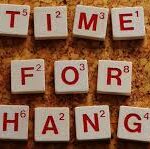This is the eve of the day on which the AHCA passed in the US House of Representatives. I can hardly describe how angry I am about it.
This is an anger that I have not felt in a long while; and as I try to process it, I ask what makes it different from any other circumstance in which I have been angry.
I can only liken it to the feelings that arise when one’s home has been broken into or one’s car has been stolen.
Yes. That’s the feeling.
It’s the feeling of being violated.
There are several elements of this bill that I find unacceptable. Any legislation that worsens the financial burden of lower socioeconomic groups and robs them of much needed support and services, I find unacceptable. And this bill is unacceptable on many levels.
Most alarming to me is the elimination of the preclusion of “pre-existing conditions”.
You see, I have a son with a pre-existing condition. His name is Jimmy, he’s 9 years old and he has autism.
Autism is a condition which has continued to confound researchers and clinicians. In addition to it encompassing deficits in social skills, communication and language, sensory processing and even motor and cognitive abilities, each of these manifestations can exist at varying degrees in different individuals, and some, not be present at all.
What we do know is that the onset is at some point during early childhood.
What we don’t know is all of the genetic and environmental factors that contribute to it.
Each autist is unique in the expression of the disorder. Some are highly intelligent, can move about independently in society, and will experience only minor difficulties in social interaction.
Others will suffer severe cognitive dysfunction; demonstrate no connection to or awareness of others; and engage in repetitive auto stimulatory activity like head banging, which becomes self-injurious and interferes with their ability to complete constructive activity.
Yet others will be the savants of “Rainman” fame. They will be severely limited in their ability to be independent or even interdependent, but will demonstrate genius at one particular skill or talent, i.e., painting, singing, mathematics.
In the case of my Jim, he would be likely to be placed at the lower end of the autism Spectrum. Jim’s handicap as it relates to understanding the spoken word, and his inability to communicate verbally leave him without the ability to understand the world around him.
He has a cognitive delay, which is difficult to characterize, because you cannot IQ test someone who does not have functional communication.
He engages in repetitive stereotypic behavior, which is called “stimming”. His most common stim involves him running from wall to wall for hours on end, which can disrupt his ability to engage in meaningful activity. This behavior appears to be spontaneous and is outside of the realm of anything that he can control.
Picture our trips to the supermarket or to the mall. Picture what a walk through a busy parking lot might be like… when you are caring for a child who can and will run off without warning, and lacks the ability to understand danger.
As a result of all of this, I found myself limiting my family’s outings and excursions. Dining out was out of the question. Travel was a “no-go”. And even attending movies was a distant dream. Not knowing what to do to impact any of Jim’s challenges, I kept the rest of my family hostage.
As Jim has grown, he has become increasingly curious about the world around him… particularly that world that exists outside of our front door. As a consequence of this, he is a wandering risk. For many years, he has exhibited a tendency to elope from places that we prefer or need him to be: the desk that he’s working at, the dining table, the bath tub. In latter years, however, his propensity for elopement has grown into full-fledged wandering.
Autists tend to be drawn to water. In fact, drowning comprises more than 90% of deaths in autistics who have wandered away. We live in Houston, where most of our neighbors have swimming pools… and few are enclosed.
Jim is 9, but we are still potty training.
We lock his room door at night so that he is safe from wandering, as well as from exploring places in our home that might be dangerous for him. For these reasons, we still use a baby monitor.
This allows us to respond to him if he awakens during the night.
On some nights, he wakes up at about 3 am and runs and bounces until early in the morning.
And most challenging of all is that he can and will become aggressive during moments of frustration and anger.
At one point in time, he would bite and scratch us everyday.
It was such that, one day while scrubbing for a surgical case with a colleague, she looked at my hands and asked me if I had a skin condition. I had to explain that I did not have a skin condition, but that the multitude of scars on my hands was the result of frustration and aggression by my son who has autism.
Our lives were, and still are, lived in a state of hyper-vigilance, as we must always be alert as to Jim’s whereabouts, activities and reaction to stimuli. Failure to do that can have devastating consequences.
When Jim was initially diagnosed, as we tried to come to a place of acceptance, we explored every option that we could find and that money could buy. We tried homeschooling; we tried in-home therapy; we tried nanny services; we tried schools for autistics; we tried speech therapy and occupational therapy; we tried gluten-free diets and fish oil. None of that worked.
Eventually, we made our way to the Early Childhood Development Program through our school district.
But even the services through special education were inadequate to help him.
We were directed to ABA (Applied Behavioral Analysis) therapy by Jim’s first Special Educator, who felt that his needs would be better served in a one-on-one environment. She recommended that we look into a place where his behaviors could be analyzed and therapy started to re-direct many of the unwanted ones.
Desperate to find someone or something that could help our son, my husband and I looked into it. We’d heard some positive things about ABA, but had also heard criticisms of the therapy, and that it was severe and too restrictive.
But we were desperate. Quite desperate. Even voodoo didn’t appear to be too extreme. We would have tried anything.
And we enrolled him in an ABA clinic near our home. What we found was that, at first, there appeared to be no change… no improvement, whatsoever.
But then slowly, over about the course of two years, the changes became apparent… the miracles were revealed.
And one day, I noticed that Jim and his older brother were playing together… they were chasing one another around our living room.
That had never happened before. Jim had lived in a world apart from the rest of us.
He’d made no eye contact; showed no emotion other than anger when he was frustrated; could not sit and attend to a task for even five seconds; ran incessantly from wall to wall, while vocalizing at the top of his lungs for hours…
For me, it seemed impossible to bond with him… this child of mine who wouldn’t look at me, wouldn’t allow me to embrace or kiss him, didn’t smile and couldn’t speak.
But, slowly, he emerged from this other world, that had entrapped him so completely.
Today, he not only makes eye contact, but he gazes right at you with his large beautiful eyes, and the longest lashes ever… and he smiles… and he giggles… and he laughs. And then he leans in for a kiss… or maybe two or three.
And he is learning to write his name… and he loves to do this.
And he is learning life skills, like how to dress and wash himself. These lessons can take months, maybe even years to learn, but, slowly or not, he is learning.
And he has some functional sign language, as well as a wonderful app on his iPad which allows him to tell us what he wants or needs.
And we see so much less aggression… no longer daily, it occurs maybe once every 4-6 months… and our scars have begun to fade.
And we have hope that we didn’t before. There is hope for him to have a future… and to be fulfilled.
There is hope for him to become a productive member of society, in whichever way God has chosen for that to happen.
And without ABA therapy, this would never have been possible.
We would have remained lost and Jim would have remained locked away in his own mind… and eventually, would have been likely to be locked away in an institution.
But ABA comes at a significant cost. It is roughly about $7,000 per month, and without medical insurance, we would be unable to provide it.
In fact, our primary plan does not even cover it.
As a result, each year, we purchase a supplemental policy for Jim. And each year, the additional policy terminates coverage of ABA therapy by the end of the annum. We find ourselves searching the exchange for a policy that will cover 40 hours of therapy per week for Jim. And every year, we must find a plan that his clinic accepts and that covers the 40 hours per week that he needs… without a cap on the total number of hours that he receives annually.
Policies that fulfill these requirements are a challenge to find, and we have discovered that our options are limited. When we find one, we purchase it and pay whatever the premium might be. And then we hold our breaths until the next year.
Under the premises of the AHCA bill, I wonder what will happen if this cycle continues. Will Jim be denied coverage in the future due to his “pre-existing condition”?
The thought of that terrifies me; but more than that, it enrages me… it enrages me because I feel violated. I feel violated and vulnerable.
And, much like, when I felt the sting of my very first car being stolen, the object of my anger has no face. There is no particular person towards whom I can direct my pain and anger. And that makes accepting it and overcoming it all the more difficult.
And so, in addition to lots of prayer, I ask myself what I can do with my rage.
And the only answer is that I need to love him more fiercely than I already do.
I was raised by a single mother who decided that she wanted better for me than the Bronx neighborhood in which I’d grown up. She wanted better for me than the sub-optimal local public school. She wanted better for me than the cycle of poverty, illiteracy and addiction that surrounded us.
And she fought fiercely to make sure that my life and opportunities were not defined by those things. I am the product of social programs and a mother’s love and dogged determination to see her child succeed.
As a single parent, she worked two jobs if she had to; made any number of personal sacrifices to send me to private school; and exposed me to as many cultural, academic and leadership activities as she could in order to prepare me to compete among my peers.
I have decided that if she could provide such opportunities for me… if she could advocate and fight for me in the manner that she did, I have neither a choice nor an excuse not to fight for my own children.
And the fight for Jim’s growth and evolution will be the biggest battle yet. It’s one in which losing is not an option.
And I will be fighting, not only for Jim, but for others with his disability. I will be in the fight for those with any number of disabilities. I will be in the fight for those whose needs are far greater than ours, and whose resources are far less.
I will be in the fight for those with “pre-existing conditions”.
And I pray that you’ll join me.
Call your legislators. Email and visit them. Speak with them and their aids. Sign in when you visit your state capitol. Make sure that they know that you were there. Lobby. Testify in a committee hearing. Make your voice and presence known.
Let our lawmakers know that the only pre-existing condition that should be relevant, is the pre-existing condition of living… and for that, we all qualify.










